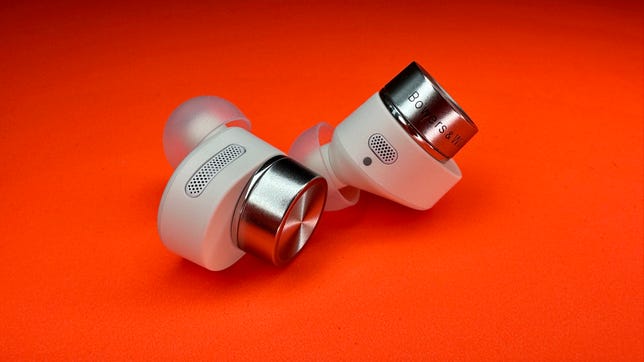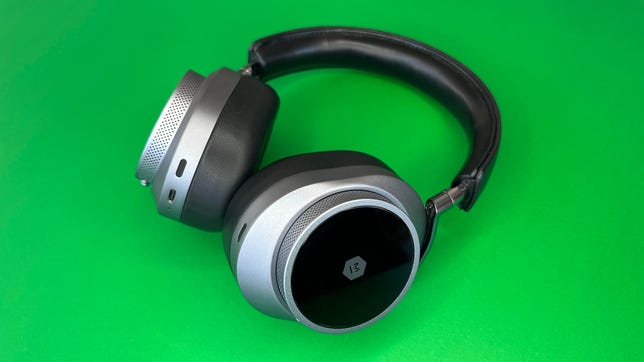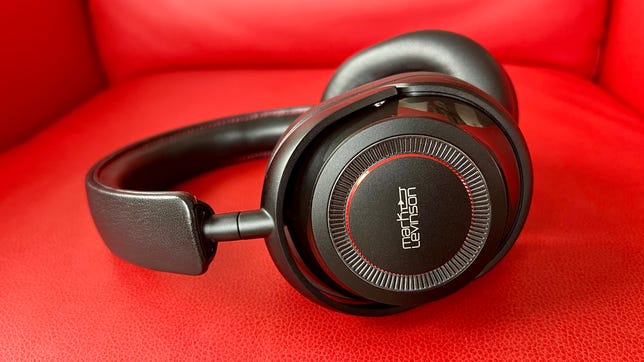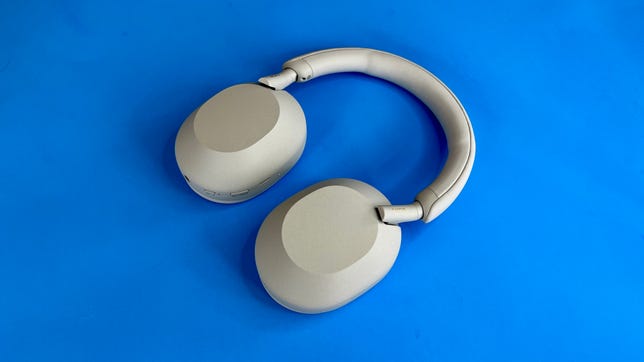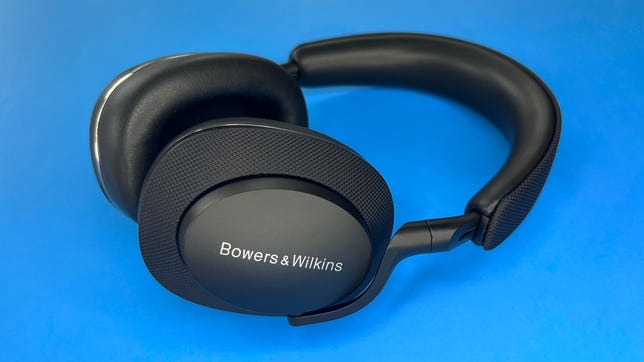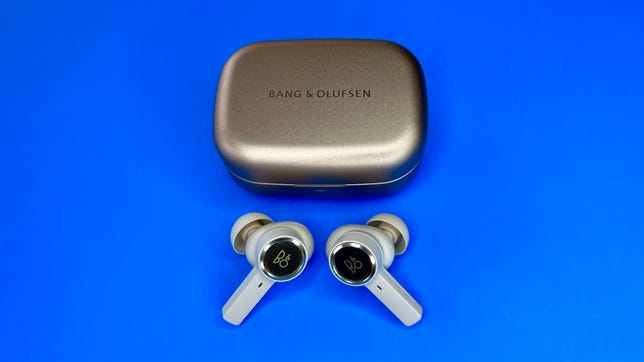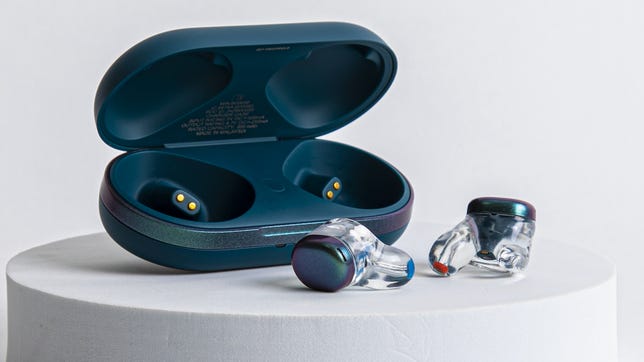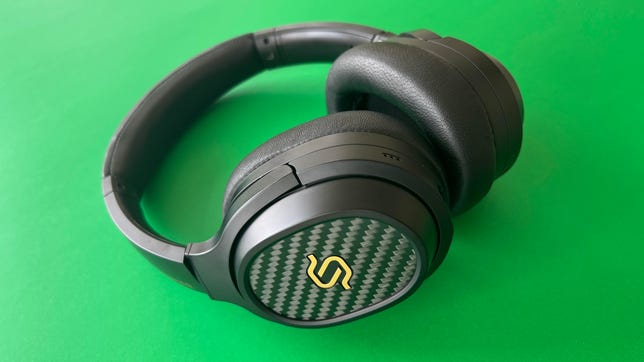A lot of people are on the hunt for quality headphones and earbuds that don’t cost too much. We’re talking anywhere from $50 to $150, with some folks willing to spend more for flagship models from certain brands like Apple, Bose and Sony.
We have lots of best earbuds and headphones lists at CNET that focus on headphones that cost less than $400 — or even less than $100 — if you’re looking for the best cheap wireless earbuds. But this list is all about high-end wireless headphones and earbuds, which we’re seeing more of, especially after Apple released its $549 AirPods Max headphones two years ago.
I can’t tell you which of these (if any) are truly worth what they cost, but they’re all great headphones and earbuds. Here’s a look at our current high-end favorites, all of which I’ve tried, and in some cases, fully reviewed.
Read more: Best Wireless Earbuds for 2022
David Carnoy/CNET
Bowers & Wilkins has upgraded its fantastic-sounding PI7 noise-canceling earbuds. The new S2 model has better battery life and Bluetooth range, now up to 25 meters (double the previous range). Additionally, the buds now integrate into the new Bowers & Wilkins Music app for iOS and Android and have an improved setup experience.
While they’re not a major upgrade from the originals, the PI7 S2s, which have a dual-driver design, are easily among the best-sounding true-wireless earbuds. The step-down PI5 S2s, which have a single driver design, don’t sound quite as good but are more affordable.
David Carnoy/CNET
French audio company Focal is known for its high-end speakers and headphones. You might call it the Bowers & Wilkins of France. And now it’s finally done what a lot of high-end audio companies have had to do in this age of on-the-go wireless music listening: make active noise-canceling Bluetooth headphones.
Over three years in development, the Bathys cost $799 and feature not only wireless connectivity but a built-in DAC (digital-to-analog converter) for USB wired listening with any computer, smartphone or tablet with USB-C. They are easily one of the best-sounding wireless headphones.
David Carnoy/CNET
When they were originally announced, Bowers & Wilkins swanky PX8 noise-canceling headphones were supposed to cost $549 or essentially the same price as Apple’s AirPod Max headphones. However, when they finally hit stores, the PX8’s price jumped to $699 or a full $300 more than the company’s step-down PX7 S2 headphones, which are also excellent (see below).
The biggest difference between the PX8, which weigh in at 320 grams, and the PX7 S2 are the PX8’s all-new 40mm Carbon Cone drive units that are “inspired” by the Carbon Dome drive units used in the company’s 700 Series loudspeaker line. Bowers & Wilkins says these units help deliver superior resolution, detail and timing with even more accurate sound than the PX7 S2.
Based on my tests, that’s true. While I liked the PX7 S2, the PX8 headphones do sound more special, with a touch more openness and overall clarity. They’re right near the top for sound in a Bluetooth headphone and are also comfortable to wear for long listening sessions (there’s no listening fatigue with these guys). For the best sound, you can listen to lossless files on a computer in wired mode with a USB-C to USB-C cable.
As for the noise-canceling function, it’s good but not quite on par with what you get from Sony’s WH-1000XM5. And while the voice-calling capabilities are solid, these don’t reduce background noise quite as well as some headphones like the Sony when you’re on calls (the transparency mode is top notch).
While I can’t say they’re worth $300 more than the PX7 S2, they’re a great set of cans if you can afford them. I do prefer the sound and overall performance of the more expensive Focal Bathys, though the Bathys don’t have such strong noise canceling, but the PX8 headphones are a close second.
David Carnoy/CNET
The MW75 are Master & Dynamic’s best full-size headphones yet. Needless to say, they’re pricey at $599; most people will be quite satisfied with the $400 Sony WH-1000XM5, which are lighter and more comfortable, and which deliver best-in-class voice calling and noise canceling. But the MW75’s build quality is hard to beat and they offer top-notch sound for a wireless model (I thought they sounded better than Apple’s AirPods Max headphones), plus strong voice-calling and noise-canceling performance. With their support for aptX Adaptive, they have additional appeal for Android users, who can get a touch better sound quality with the right setup. But I was also quite happy streaming music with my iPhone 13 Pro using the AAC codec.
David Carnoy/CNET
The No. 5909s are premium audio brand Mark Levinson’s first headphones. Yes, they’re expensive at $999 and probably a wee bit overpriced, but they’re excellent. They have a sturdy design without managing to feel hefty on your head (read: they’re substantial but not too heavy) and they’re comfortable to wear over long periods thanks to their nicely padded (and replaceable) leather-covered earcups and headband.
Not only do they feature good noise canceling and excellent sound, but their voice-calling performance is top-notch, making them one of the best noise canceling headphones options on the market. Plus, they have multipoint Bluetooth pairing so you can pair them with two devices, such as a computer and a smartphone, simultaneously.
The No. 5909 are high-res certified with support for Sony’s LDAC and Qualcomm’s aptX Adaptive codecs that allow for near-lossless streaming over Bluetooth. Apple’s iPhones and iPads don’t support those codecs while certain Android devices do. Using the No. 5909 headphones over Bluetooth on my iPhone 13 Pro, it sounded a tad more natural and refined than the AirPods Max (the No. 5909 had a touch more “pure” and accurate sound).
I did notice a difference when I paired the No. 5909 to my Google Pixel 4 XL, which has support for LDAC, and using the Qobuz audio streaming service’s high-res streaming. Overall, the sound had a little more depth and texture, and there’s a touch more sparkle, definition and openness.
David Carnoy/CNET
When you have a product that a lot of people love, change can be risky. Such is the case for Sony’s WH-1000XM5, the fifth generation of the 1000X series headphones, which were first released in 2016 as the MDR-1000X Wireless and have become increasingly popular as they’ve improved with each generation. Over the years, Sony has made some tweaks to the design, but nothing as dramatic as what it’s done with the WH-1000XM5. Other than the higher $400 price tag ($50 more than the WH-1000XM4), most of those changes are good, and Sony’s made some dramatic improvements with voice-calling performance as well as better noise canceling and a more refined sound.
David Carnoy/CNET
Available in three color options (gray, blue and black), Bowers & Wilkins PX7 S2 headphones offer some significant improvements over the first-gen version. Not only are these headphones more comfortable — they tip the scales at 307 grams — but they sound better and have better noise-canceling and voice-calling performance with improved noise reduction. I don’t necessarily think they’re a better option than the lighter and more comfortable Sony WH-1000XM5. But the PX7 S2 certainly looks and feels luxurious with its sturdy design, and it delivers good sound with better voice-calling performance thanks to an upgraded microphone setup.
Bowers & Wilkins’ step-up model, the PX8, does sound better, but it costs $699.
David Carnoy/CNET
Bang & Olufsen’s Beoplay EX buds are the company’s best true-wireless earbuds yet. They feature a comfortable, secure fit (except perhaps for those with smaller ears), top-notch build quality, great sound, good noise canceling and improved voice-calling performance over B&O’s EQ buds, with three microphones in each earbud they help with reducing background noise while picking up your voice. While they’re out of most people’s price range, they’re arguably the best earbuds out there with stems and offer superior sound to the AirPods Pro with better clarity, deeper more powerful bass and richer, more accurate sound.
Battery life is rated at 6 hours at moderate volume levels with noise canceling on and there’s an extra 14 hours of juice in the brushed aluminum charging case (wireless charging is supported). The buds have an IP57 water-resistance rating, which makes them waterproof and dust-resistant. They feature Bluetooth 5.2 and multipoint Bluetooth pairing so you can connect to two devices at the same time, such as a computer and smartphone. You can use a single bud independently and the earbuds have ear-detection sensors so your music pauses when you remove them from your ears.
The buds support AptX Adaptive for devices like Android smartphones that support Bluetooth streaming with the AptX HD audio codec (AAC is also supported). They’re available in the gold tone pictured as well as a graphite color.
Ultimate Ears
Before it started making Bluetooth speakers, Ultimate Ears made a name for itself with its custom-fit wired earbuds that found a fanbase with audiophiles and musicians. Now you can get that same custom fit (the ear tips are customized for your ears) with the UE Drops.
While these are not active noise-canceling earbuds and Ultimate Ears took some criticism for not having the latest flavor of Bluetooth in a set of expensive earbuds (the Drops have Bluetooth 4.2 instead of Bluetooth 5.3) or AptX audio codec support for Android phones, they fit my ears really well and sounded excellent, with nicely detailed sound and well-defined bass. I found them great for longer listening sessions and they do have a transparency mode.
To create the custom fit, UE sends you an at-home fit kit that will capture your ear impressions using Lightform technology. It comes with a return label to send your impressions back to UE and the final product — uniquely shaped to your ears — arrives within a few weeks. The Drops are available in onyx, sapphire and rose quartz and are sweat-resistant for workouts. They list for $449 but are currently selling for $399.
David Carnoy/CNET
Edifier makes some nice headphones and earbuds that offer good quality for your dollar. And while its Stax Spirit S3 is pretty pricey at $400, it’s essentially a value version of a high-end audiophile headphone. It features planar-magnetic drivers (with Audeze components) that deliver clean, clear, distortion-free sound. Though these aren’t noise-canceling headphones, they are wireless and are certified as hi-res. You can also use them as wired headphones, though you may want to pair them with a headphone amp in wired mode.
I found them comfortable to wear, and they’re relatively compact and reasonably weighted (329 grams) for planar magnetic headphones. Battery life is excellent at up to 80 hours of listening time at moderate volume levels, and these do have multipoint Bluetooth pairing so you can simultaneously connect them to two devices (such as a smartphone and a computer). They’re also decent for making calls and come with an additional set of “cooling-mesh” ear pads for outdoor use in warmer environments.
These are built on Qualcomm’s Snapdragon audio platform and support its aptX Adaptive audio codec (along with SBC but alas, not AAC), which is capable of delivering near lossless audio if you stream from an aptX-compatible Android device or dedicated music player and subscribe to a music service such as Qobuz or Tidal that offers high-resolution tracks. Certain smartphones are now certified for Snapdragon Audio, which simply means you’re getting the best end-to-end Qualcomm solution for wireless Bluetooth streaming. I tested these headphones with the Motorola Edge Plus 2022 smartphone, which features Snapdragon Audio. How much of a difference it made is debatable, but overall I was impressed with the sound, though sound does vary with the recording quality of certain tracks (the headphones are revealing, sometimes too much so).
Planar magnetic headphones are known for delivering detailed sound with well-defined bass and clear, natural-sounding mids (where voices live). These have a balanced, flatter sound profile and while the bass is punchy and ample, it’s not quite as meaty as what you get with some headphones like Apple’s AirPods Max or Sony’s WH-1000XM5. But they do sound really good. And while they’re missing some features, like ear-detection sensors that automatically pause your music when you take the headphones off, and a customizable EQ (you only get a few presets along with a low-latency gaming mode), you’re ultimately buying these for their audio quality.

